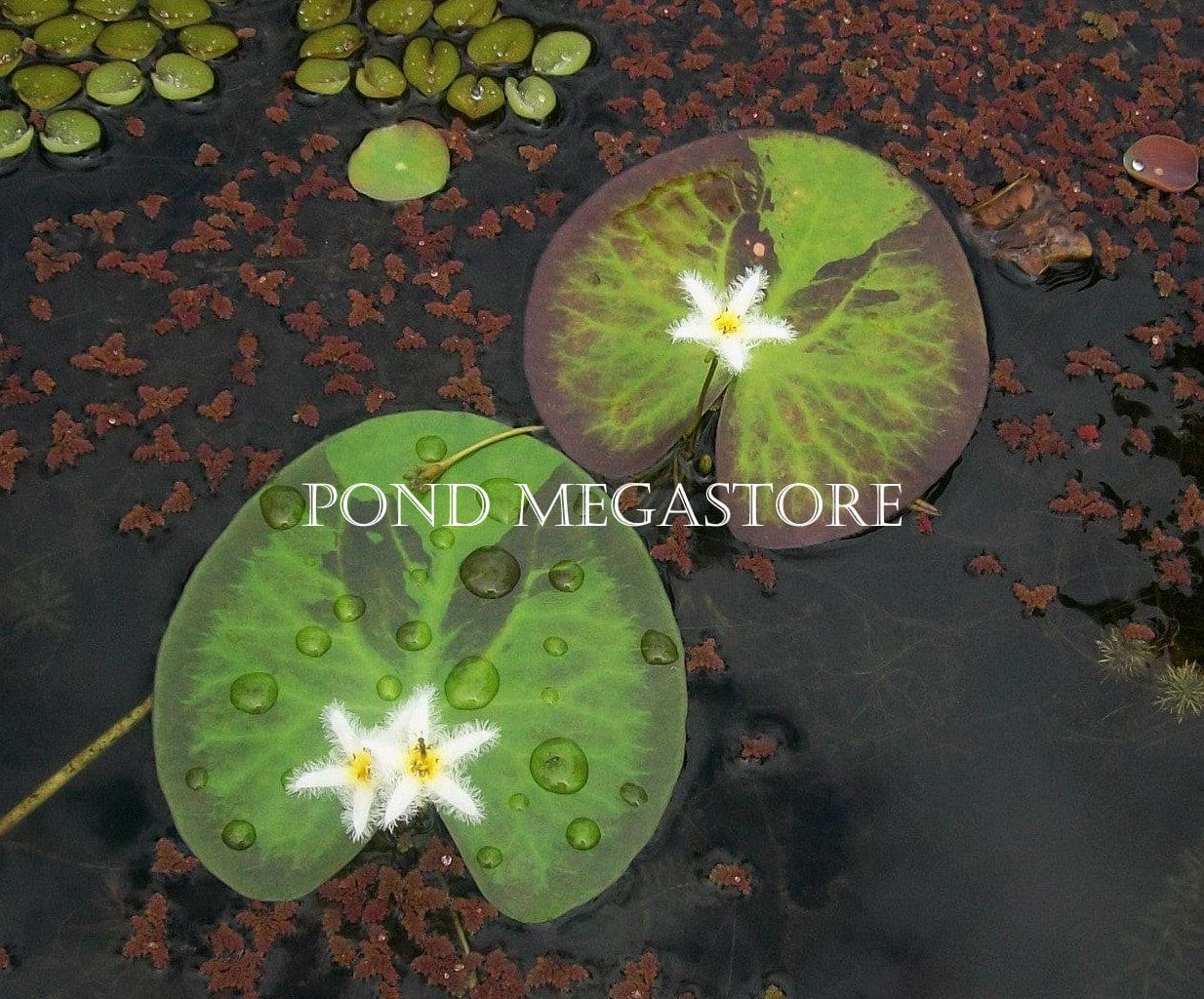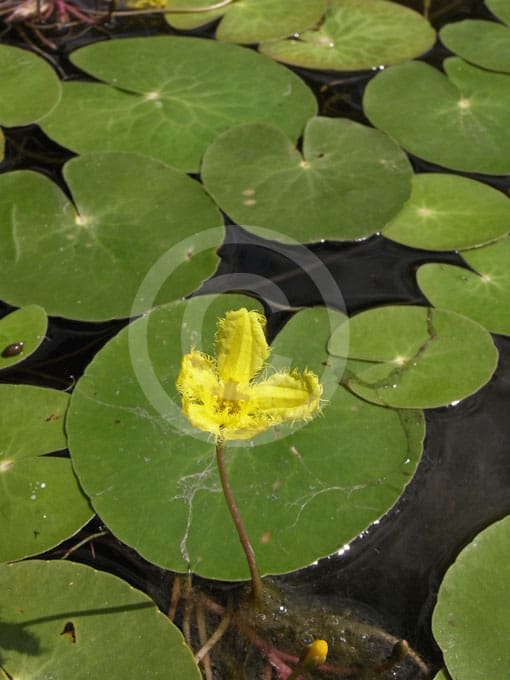In exploring the vast and intriguing world of aquatic botany, you may encounter one particular specimen known as Nymphoides Montana. As you stroll along this educational journey, this captivating introduction will gently pull you into the mesmerizing realm of this aquatic plant. An understanding of Nymphoides Montana is more than just basic botanical knowledge; it’s a fascinating study of plant survival and adaptation, of biodiversity, and of the pivotal ecological role such seemingly insignificant species play in aquatic environments. You will soon discover that what appears to be a simple, delicate water lily bears a rich and significant tale of survival, growing, and thriving beneath the surface.
Overview of Nymphoides Montana
“Nymphoides montana, an aquatic plant known for its floating leaves and stunning yellow blooms. These characteristics confer a unique visual appeal to the aquatic landscapes they decorate. This plant is a valuable asset to aquatic environments and plays a significant role in the support and maintenance of these ecosystems.
Definition of Nymphoides Montana
Nymphoides montana is a unique species of aquatic flora from the family Menyanthaceae. Known for their heart-shaped floating leaves and clusters of delicate yellow flowers, these plants add a captivating aesthetic appeal to their surroundings, while playing a crucial role in the ecosystem.
Physical characteristics of Nymphoides Montana
This plant has rosettes of heart-shaped leaves that float on the water surface and roots that are firmly anchored in sediments below the water. The leaves are deep green, adding contrast to the clusters of yellow, fringed flowers that bloom atop slender stalks. These flowers also exhibit a symmetrical, five-petal design which adds to their ornamental appeal.
Habitat and geographical distribution
Abundantly found in the freshwater bodies across the high-altitude regions of Australia, Nymphoides montana is native to the temperate climates of the Australian montane regions. They are common in relatively shallow, clear slow-moving, or still bodies of water, including lakes, ponds, streams, and river margins.
Common names and nomenclature
Commonly known as the ‘Mountain Water Fringe,’ inference to the plant’s native high-altitude habitat and its characteristic fringed flowers, Nymphoides montana is also referred to as the ‘Australian Snowflake’ in certain regions, due to its resemblance to snowflakes when in full bloom.
Botanical description of Nymphoides Montana
Nymphoides montana, like other members of the Menyanthaceae family, exhibits distinct botanical features that allow it to thrive in aquatic environments.
Leaf description
The leaves are cordate (heart-shaped) with a deep, glossy green coloration. They typically measure between 1-3.5 cm in width and length. Their buoyant nature allows them to float on the water’s surface, creating a space for the flowers to bloom.
Flower description
The flowers of Nymphoides montana are yellow in color, symmetrical, and exhibit a distinct five-petal design. Each flower measures approximately 1 cm and is fringed with delicate, hair-like filaments at the edges. These blooms usually appear during the summer.
Root and stem system
This plant has an intricate root system, which is vital for anchoring it into the sediment at the bottom of freshwater bodies. The roots emerge from a rhizomatous stem that stretches horizontally. This stem also serves as a conduit for transporting essential nutrients from the roots to the other parts of the plant.
Reproductive structure
Nymphoides Montana reproduces both sexually and asexually. A flower, once fertilized, develops seeds which are then distributed by the movement of water. The plant also propagates asexually through the rhizomes, by producing new shoots.

Life cycle of Nymphoides Montana
The life cycle of the Nymphoides Montana is strongly adapted to its habitat and has particular processes for germination, growth, and reproduction.
Germination process
The seeds of Nymphoides montana, once they have matured, fall into the sediment. Here, they lie dormant until the conditions are conducive for germination, which invariably involves adequate light, temperatures, and moisture.
Growth stages
Post-germination, the seedling directs its energy to establish a robust root system into the sediment. Following this, stems begin to grow with leaves emerging above water, forming a floating rosette. Finally, flowers emerge for the reproductive phase.
Reproduction and propagation
Nymphoides Montana reproduces both sexually (through the dispersal of seeds) and asexually (through the growth and separation of new shoots from the parent rhizome).
Decay and regeneration
With the change of seasons, there might be some decay in the external features while the rhizomes stay alive. Upon the return of favorable conditions, regeneration occurs from the rhizome, and the life cycle continues.
Cultivation and care for Nymphoides Montana
Nymphoides montana requires not just a specific physical environment, but also a certain amount of care and cultivation, including the control of pests and diseases.
Suitable environments and conditions
The plant thrives in high altitudes, with temperatures that mimic a cool temperate climate. A stagnant or slow-flowing freshwater body is ideal with access to full sun or partial shade and neutral to slightly acidic soil.
Water and nutrient requirements
Being a hydrophyte, Nymphoides Montana requires a continuous supply of water. Nutrient absorption occurs through the root system in the waterlogged sediments.
Common diseases and pests
Like other aquatic plants, Nymphoides Montana can be affected by aphids, water snails, and fungal infections. However, with good cultivation practices and regular monitoring, these conditions can be managed or altogether avoided.
Management and care practices
Regular monitoring for diseases and pests, prompt removal of decayed plant parts, ensuring sufficient light, and maintaining the appropriate water pH are integral parts of management and care practices.

Uses of Nymphoides Montana
This aquatic perennial has a range of uses, from its aesthetic application in water gardens to its potential use in traditional medicine.
Use in aquatic landscaping and design
With their floating rosettes of deep green foliage and clusters of yellow blooms, Nymphoides Montana provides a visually striking feature in aquatic landscapes, such as ponds.
Role in ecosystem and biodiversity
Its floating leaves create a habitat for aquatic animals and birds. They also aid in maintaining water quality and biodiversity by preventing excessive growth of algae.
Possible usage in herbal and traditional medicine
While research is still in progress, the roots, leaves, and flowers of Nymphoides Montana have been reportedly used in traditional medicine, suggesting a potential for development in this area.
Potential hazards and risks
As with all aquatic plants, there is the risk of Nymphoides Montana becoming invasive in an ideal environment, which can threaten native biodiversity by disrupting the balance of the ecosystem.
Ecological importance of Nymphoides Montana
Nymphoides Montana plays a significant role in the overall health and ecological integrity of aquatic ecosystems.
Contribution to water filtration
By absorbing excess nutrients, the plant assists in the filtration of water, thereby helping to improve water quality and inhibit the overgrowth of algae.
Creating habitat for aquatic life
The plant provides crucial shelter and habitat for various aquatic organisms, ranging from invertebrates to fish and avian species, adding to the overall biodiversity of the region.
Importance in maintaining biodiversity
By providing food and habitat, Nymphoides Montana aids in sustaining a diverse range of wildlife, thus enhancing local biodiversity.
Impact on carbon cycling
Like other plants, Nymphoides Montana plays a role in the global carbon cycle by absorbing carbon dioxide during photosynthesis, thereby contributing to the reduction of greenhouse gases in the atmosphere.

Outlook of Nymphoides Montana in scientific research
Nymphoides Montana offers exciting prospects for scientific research due to its numerous attributes.
Current scientific interest
Current research focuses on its capacity for nutrient uptake, tolerance to varying environmental conditions, and potential medicinal properties.
Possible future applications and research directions
Future research could explore the plant’s potential as a bioindicator of water quality and its possible use in wastewater treatment due to its high absorbency of nutrients.
Prevailing challenges in research
Key challenges encompass developing reliable methods to grow the plant under laboratory conditions and documenting its response to different stressors, both critical for extending its utility in practical applications.
Methods of controlling and eradicating invasive Nymphoides Montana
An unchecked growth of Nymphoides Montana can turn invasive and disrupt local ecosystems.
Non-chemical control methods
These include manual removal, where the plant, including the root system, is physically extracted, and biological control, which involves deploying species that feed on this plant to control its growth.
Chemical control methods
Herbicides specifically designed for aquatic plants can be used. However, it’s necessary to consider the impact on other plants and wildlife.
Preventive measures
These include regular monitoring and rapid response to new infestations, combined with public education programs to create awareness about invasive plants.

Comparative study of Nymphoides Montana and other Nymphoides species
Nymphoides Montana shares some common features with other species of the same genus, yet it also has its unique characteristics.
Similarities and differences
While most Nymphoides species have floating leaves and yellow flowers, their size, shape, flowering period, and habitat preferences can differ significantly.
Adaptability and resilience
Nymphoides Montana exhibits strong adaptability and resilience, thriving in varied water depths and temperature ranges. This further distinguishes it from some of its counterparts.
Distinct characteristics
The unique heart-shaped leaves and fringed yellow flowers are typical of Nymphoides Montana, distinguishing this plant from other species in the genus.
Conservation efforts for Nymphoides Montana
As with other native flora, Nymphoides Montana requires conservation efforts to maintain its populations in the face of environmental change.
Current status and risks
While the species is not currently listed as endangered, habitat destruction, pollution, and the spread of invasive species pose substantial threats to its survival.
Conservation strategies
Strategies include protecting and managing its natural habitats, restoring degraded environments, and monitoring populations regularly to detect and manage potential threats.
Role of local and international organisations
Organisations at various levels play crucial roles in the conservation of Nymphoides Montana by promoting research, funding habitat protection initiatives, and educating the public about the importance of biodiversity.
